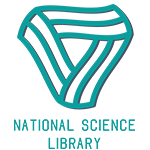Please use this identifier to cite or link to this item:
https://openscience.ge/handle/1/1591| DC Field | Value | Language |
|---|---|---|
| dc.contributor.advisor | ბესიაშვილი, გელა | ka |
| dc.contributor.author | გოგისვანიძე, სალომე | ka |
| dc.date.accessioned | 2020-01-27T09:19:00Z | - |
| dc.date.available | 2020-01-27T09:19:00Z | - |
| dc.date.issued | 2019 | - |
| dc.identifier.uri | https://openscience.ge/handle/1/1591 | - |
| dc.description.abstract | Deep learning is a machine learning technique that teaches computers to do what comes naturally to humans: learn by example. Deep learning is a key technology behind driverless cars, enabling them to recognize a stop sign, or to distinguish a pedestrian from a lamppost. It is the key to voice control in consumer devices like phones, tablets, TVs, and hands-free speakers. Deep learning is getting lots of attention lately and for good reason. It’s achieving results that were not possible before. In deep learning, a computer model learns to perform classification tasks directly from images, text, or sound. Deep learning models can achieve state-of-the-art accuracy, sometimes exceeding humanlevel performance. Models are trained by using a large set of labeled data and neural network architectures that contain many layers. | en |
| dc.description.abstract | ღრმა სწავლება არის მანქანური სწავლების მეთოდი, რომელიც ასწავლის კომპიუტერებს ადამიანებისთვის ბუნებრივ ქმედებებს. სიღრმისეული შესწავლა არის წამყვანი ტექნოლოგია, რომელიც უკავშირდება მანქანებს მძღოლის გარეშე, საშუალებას აძლევს მათ გაარჩიონ გაჩერების ნიშანი, ფეხით სავალი გზა და ა.შ. ღრმა სწავლება არის ხმის კონტროლის გასაღები ისეთ მოწყობილობებში როგორიცაა ტელეფონები, ტაბლეტები, ტელევიზორები და ა.შ. სიღრმისეულ კვლევას დიდ ყურადღება ეთმობა ბოლო პერიოდში. მისი დახმარებით ისეთი შედეგის მიღწევაა შესაძლებელი, რაც ადრე არ იყო. ღრმა სწავლებაში კომპიუტერული მოდელი სწავლობს შეასრულოს კლასიფიკაციის ამოცანები უშუალოდ გამოსახულებების, ტექსტისა და ხმისგან.მოდელები იწვრთნებიან დიდი რაოდენობის ეტიკეტირებული მონაცემებისა და ნეირონული ქსელის არქიტექტურის გამოყენებით, რომელიც შეიცავს ბევრ ფენებს. | ka |
| dc.format.extent | 34 გვ. | ka |
| dc.language.iso | ka | en |
| dc.publisher | Ivane Javakhishvili Tbilisi State University | en |
| dc.publisher | ივანე ჯავახიშვილის სახელობის თბილისის სახელმწიფო უნივერსიტეტი | ka |
| dc.subject | ღრმა სწავლება | ka |
| dc.subject | განსხვავებები მანქანურ და ღრმა სწავლებას შორის | ka |
| dc.subject | გრადიენტური დაშვება | ka |
| dc.subject | კონვოლუციური შრე | ka |
| dc.subject | უკუპროპაგაციული მოდელი | ka |
| dc.title | ღრმა სწავლება | ka |
| dc.type | master thesis | en |
| dc.type | სამაგისტრო ნაშრომი | ka |
| thesis.degree.name | Master of Information Technology | en |
| thesis.degree.name | მაგისტრი ინფორმაციულ ტექნოლოგიებში | ka |
| thesis.degree.level | 1 | - |
| thesis.degree.discipline | ინფორმაციული ტექნოლოგიები. Information Technology | ka |
| thesis.degree.grantor | ივანე ჯავახიშვილის სახელობის თბილისის სახელმწიფო უნივერსიტეტი | ka |
| dc.contributor.institution | Ivane Javakhishvili Tbilisi State University | en |
| dc.contributor.institution | ივანე ჯავახიშვილის სახელობის თბილისის სახელმწიფო უნივერსიტეტი | ka |
| dc.contributor.faculty | Faculty of Exact and Natural Sciences | en |
| dc.contributor.faculty | ზუსტ და საბუნებისმეტყველო მეცნიერებათა ფაკულტეტი | ka |
| item.languageiso639-1 | ka | - |
| item.cerifentitytype | Publications | - |
| item.cerifentitytype | Publications | - |
| item.openairecristype | http://purl.org/coar/resource_type/c_bdcc | - |
| item.openairecristype | http://purl.org/coar/resource_type/c_18cf | - |
| item.openairetype | master thesis | - |
| item.openairetype | სამაგისტრო ნაშრომი | - |
| item.grantfulltext | open | - |
| item.fulltext | With Fulltext | - |
| Appears in Collections: | ზუსტ და საბუნებისმეტყველო მეცნიერებათა ფაკულტეტი (დისერტაციები, სამაგისტრო ნაშრომები) | |
Files in This Item:
| File | Description | Size | Format | |
|---|---|---|---|---|
| MA Thesis Gogisvanidze Salome.pdf | ღრმა სწავლება | 745.02 kB | Adobe PDF | View/Open |
CORE Recommender
Page view(s)
319
checked on May 3, 2024
Download(s)
223
checked on May 3, 2024
Google ScholarTM
Check
Items in DSpace are protected by copyright, with all rights reserved, unless otherwise indicated.

